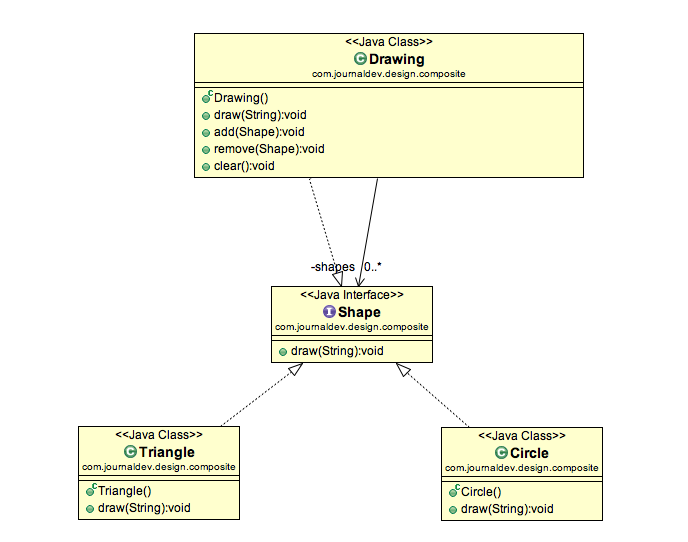Table Of Content

We provided code examples for these patterns, discussed their advantages and disadvantages, and provided recommendations for their use. This pattern ensures that a class only has one instance and provides a global point of access to it. In this code, we’ve created a Coffee class and a SimpleCoffee class that extends Coffee.
Abstract Factory Pattern
We can’t add any new functionality to remove any existing behavior at runtime – this is when the decorator pattern is useful. The Creational patterns provide solutions by class instantiation and object creations. They make use of inheritance and delegation effectively to implement a correct solution. The template method pattern is a behavioral design pattern and is used to create a method stub and to defer some of the steps of implementation to the subclasses.
Observer design Pattern in Java with Real world code Example
In the context of software development, a design pattern is a reusable solution that can be applied to common problems encountered in software design. They represent best practices evolved over a period of time and are named in a way that can convey their intent. The Composite pattern is a structural design pattern that allows you to compose objects into tree structures and then work with these structures as if they were individual objects.
More creational patterns

This approach ensures that cloned objects can be tailored to meet specific user preferences. The Prototype pattern not only streamlines the object creation process but also enhances the overall performance of the application. The Mediator pattern defines an object that encapsulates how a set of objects interact. It promotes loose coupling by keeping objects from referring to each other explicitly and allows their interaction to be changed independently. The Iterator pattern provides a way to access the elements of an aggregate object sequentially without exposing its underlying representation. It's useful when you want to traverse a data structure without knowing its implementation details.
It typically holds a reference to the prototype and utilizes it to create new instances. The Cloneable interface serves as a marker interface, indicating that the objects of the implementing class can be cloned. The clone() method is crucial, providing a standardized mechanism for creating a copy of the object.
How to get and use banner patterns in Minecraft (2022) - Sportskeeda
How to get and use banner patterns in Minecraft ( .
Posted: Tue, 25 Oct 2022 07:00:00 GMT [source]
The chain of responsibility pattern is used to achieve loose-coupling in software design where a request from the client is passed to a chain of objects to process them. Then the object in the chain will decide who will be processing the request and whether the request is required to be sent to the next object in the chain or not. Structural design patterns provide different ways to create a Class structure (for example, using inheritance and composition to create a large Object from small Objects). Flyweight Method is a structural design pattern, it is used when we need to create a lot of objects of a class. Since every object consumes memory space that can be crucial for low memory devices, flyweight design pattern can be applied to reduce the load on memory by sharing objects.
Builder in Java
The Composite pattern is great for representing part-whole hierarchies. However, it can make design overly general and harder to restrict components. J2EE Patterns are concerned about providing solutions regarding Java EE. These patterns are widely accepted by other frameworks and projects, like for an example Spring.
Abstract Factory
In software engineering, design patterns can help in creating software that is flexible, maintainable, and scalable. When dealing with complex systems with numerous interacting parts, design patterns can help manage this complexity by providing a clear, standardized structure. The adapter design pattern is one of the structural design patterns and is used so that two unrelated interfaces can work together. Behavioral design patterns are a subsetof design patterns in software development that deal with the communication and interaction between objects and classes.
Decorator Pattern
This pattern is used to implement this in such a way that the saved state data of the object is not accessible outside of the Object, this protects the integrity of saved state data. The state design pattern is used when an Object changes its behavior based on its internal state. If we have to change the behavior of an Object based on its state, we can have a state variable in the Object and use if-else condition block to perform different actions based on the state. The state pattern is used to provide a systematic and loosely-coupled way to achieve this through context and state implementations. Design patterns in Java help developers create more maintainable, flexible, and understandable code.
It is useful when you need to implement undo/redo functionality or need to save and restore the state of an object without exposing its internal details. So you can produce snapshots of the object’s state to be able to restore a previous state of the object. We iterate over something that we don’t know about the data structure and the complexity behind it. Also in front-end development, this pattern is popular when we want to react to the behavior of a user. Choosing the proper pattern, can make our project more flexible and reusable.
In Java, design patterns help maintain code modularity and promote good coding practices. Implementing design patterns in Java requires an understanding of the patterns themselves, as well as a familiarity with Java syntax and programming concepts. In this guide, we will provide an overview of some commonly used design patterns in Java and show you how to implement them in your code.
No comments:
Post a Comment